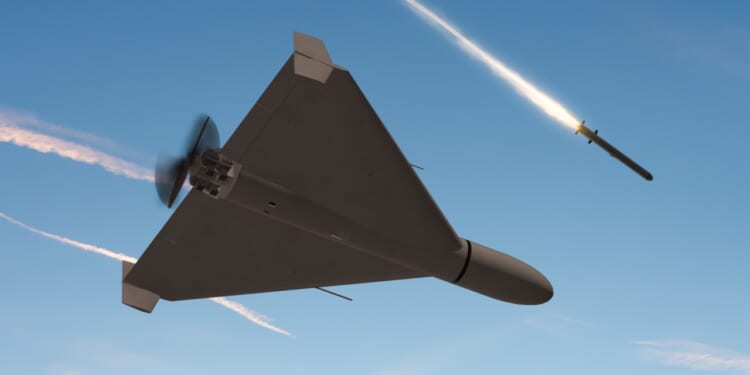In September, Russia launched around 5,500 drones at Ukraine.
The Russian military fired fewer suicide drones against Ukraine in October. Nevertheless, the Ukrainian air defenses had to deal with over 5,000 suicide drones, in addition to ballistic and cruise missiles.
October Russian Suicide Drone Launches
According to the latest estimates of the British Ministry of Defence, the Russian military launched approximately 5,300 one-way attack uncrewed aerial systems (OWA UAS) against targets across Ukraine. There was a slight decrease (in the range of 200 suicide drones) from September, when the Russian forces launched approximately 5,500 OWA UAS against targets in Ukraine.
“It is highly likely that Russia’s October 2025 launch rate was moderately reduced due to worsening weather conditions,” the British Ministry of Defence assessed in its latest intelligence estimate.
According to the data, the Russian forces fired hundreds of suicide drones immediately following lull periods due to adverse weather. Kyiv remains the main target for Russia’s drones and missiles.
The Ukrainian military has employed a wide range of methods to curtail the suicide drone threat, including helicopter patrols and drone-hunting unmanned aerial systems. The Ukrainians use such methods in an attempt to preserve their anti-aircraft missile stocks. With a limited number of interceptors available, the Ukrainian Air Force wants to save the precious munitions for dealing with advanced Russian ballistic and cruise missiles, not cheap suicide drones. But that is exactly what the Russian military does not want.
Russian suicide drones present a significant challenge to the Ukrainian air defense umbrella. The Russian military tends to fire hundreds of suicide drones alongside short-range ballistic missiles and cruise missiles in an attempt to confuse Ukrainian air defense systems. And they are succeeding. In October, the Ukrainian Air Force intercepted approximately 4,242 suicide drones out of the 5,300 launched, an interception rate of just under 80 percent.
“It is almost certain that Russia aims to saturate targets including military industry and airfields to both maximise damage and increase the survivability of premier missiles,” the British Ministry of Defence added.
During a large-scale attack, the Ukrainian air defense umbrella might face several hundred, or even thousands, missiles and drones. Distinguishing between the more serious threats and suicide drones can prove difficult, especially in time-sensitive conditions.
Fewer Strategic Bomber Sorties
But the Russian military did not just launch fewer suicide drones in October. Its strategic bomber attacks also decreased. The decrease in bomber sorties was likely the result of the same adverse weather conditions that reduced the number of suicide drone launches, as well as the culmination of the Russian Aerospace Forces’ training and testing season. The Russian Aerospace Forces also lost several aircraft in Ukraine’s daring Operation Spider Web over the summer.
“While four LRA [Long Range Aviation] strike packages were observed in October 2025, they were limited in their missile expenditure, predominately using the unreliable AS-24 KILLJOY air launched ballistic missile instead of their premier AS-23 KODIAK air launched cruise missile,” the British Ministry of Defence assessed.
Russian strategic bombers have been mainly targeting Ukraine’s critical infrastructure and energy grid in an effort to increase pressure on the Ukrainian population during the harsh winter months. This will be the third winter that many Ukrainian people will have to go without heat, water, and internet because of the Russian missile and suicide drone attacks.
About the Author: Stavros Atlamazoglou
Stavros Atlamazoglou is a seasoned defense journalist specializing in special operations and a Hellenic Army veteran (national service with the 575th Marine Battalion and Army HQ). He holds a BA from the Johns Hopkins University and an MA from the Johns Hopkins’ School of Advanced International Studies (SAIS). His work has been featured in Business Insider, Sandboxx, and SOFREP.
Image: Shutterstock.


















